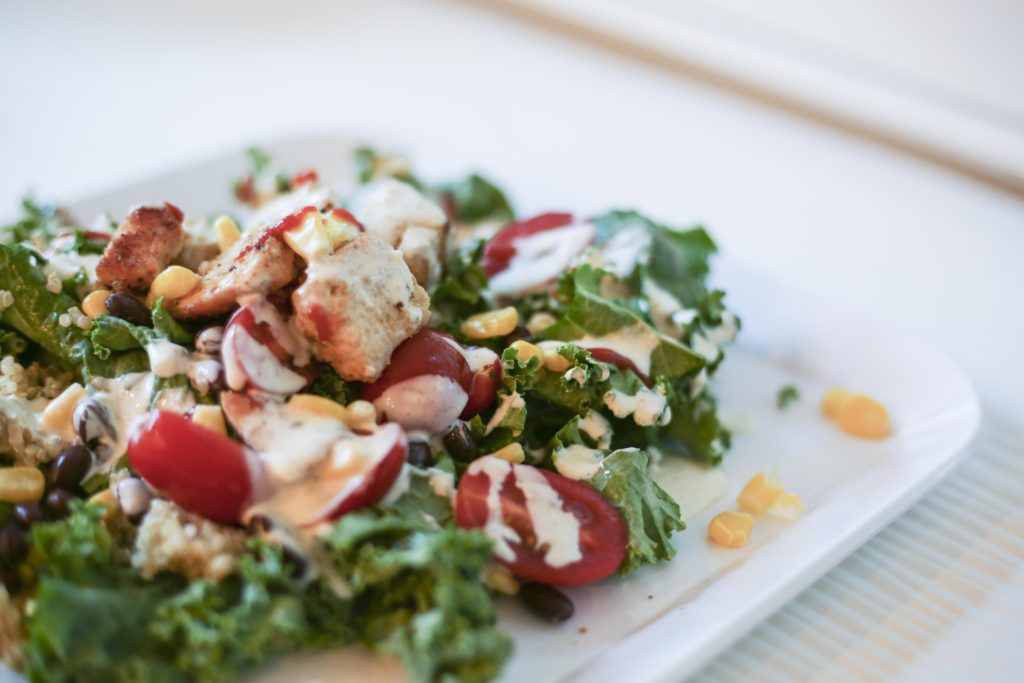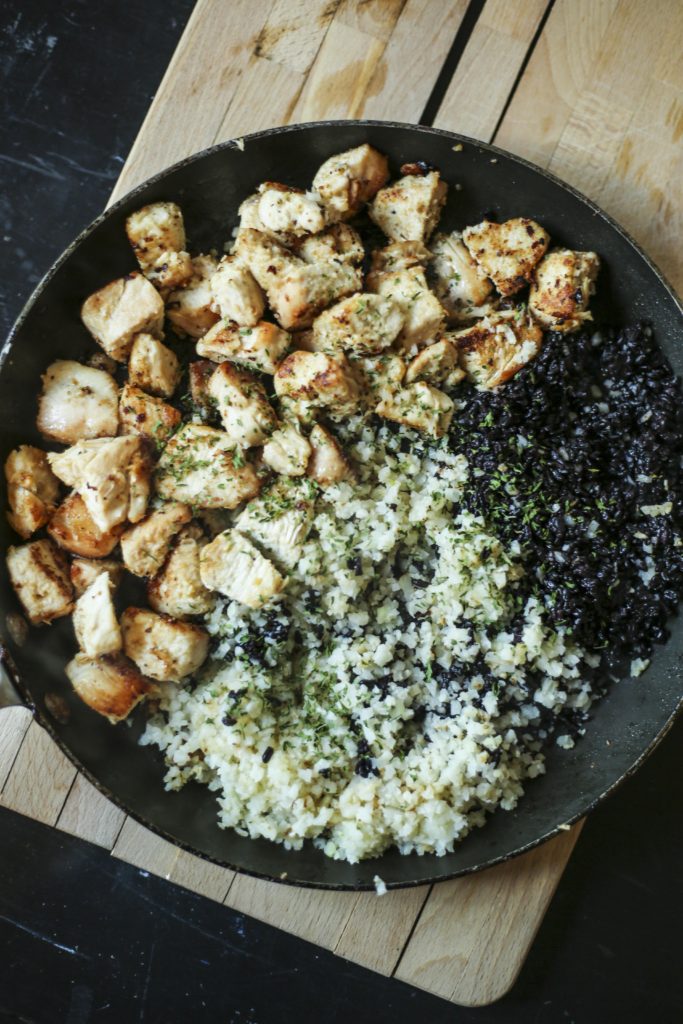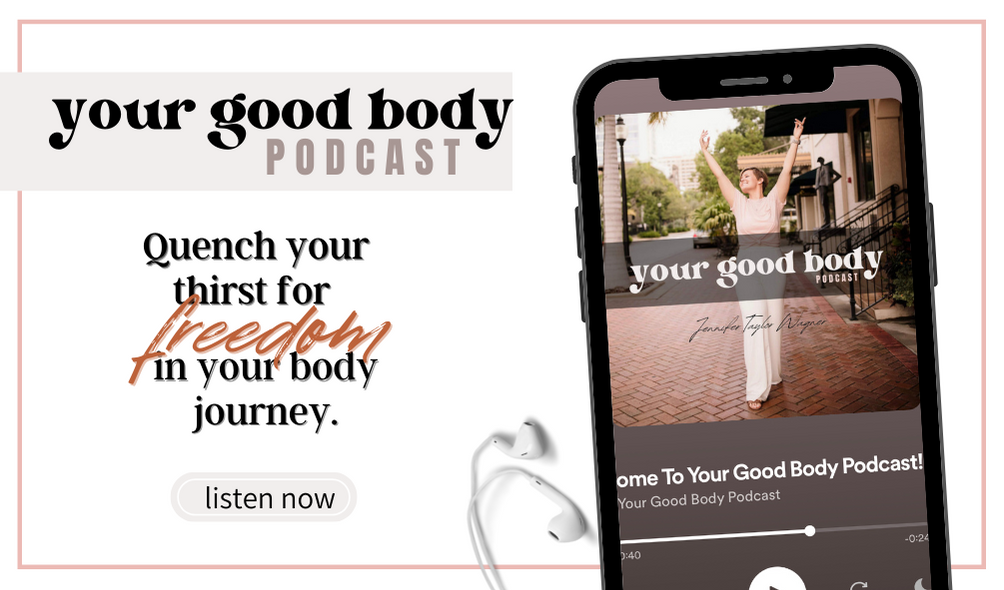This post may contain affiliate links., which means if you make a purchase using any affiliated links, I will earn a small commission at zero additional cost to you.
There are four main elements of a healthy meal, and I’m going to share them with you today.
With countless articles, blogs, and weight-loss programs being shoved in our faces everyday, it’s hard to sift through the information in a way that actually leaves us excited about moving forward in our health journey.
But in reality, we complicate things way more than necessary. Losing weight can actually be quite simple, if you learn some of the basic principles.
Throughout my 160-pound weight-loss journey I’ve learned a thing or two about losing weight, feeling better, and getting healthier. I don’t claim to know it all, but I’ve sure accomplished a lot in this area! And I’ve made it my mission to share everything I know.

Calorie Counting – Yay or Nay?
One of the biggest nutrition lessons I’ve learned is that not all calories are created equally!
*gulp*
If they were, you could consume nothing but popcorn all day every day, and lose weight — as long as you stayed within your allotted calorie amount.
We all know you can’t lose weight over a long period of time, and keep it off, eating nothing but popcorn all day every day. Why? Because eating something like popcorn all day every day would rob you of actual nutrients which are found in a wide variety of foods.
Weight loss is NOT solely reliant on the idea of calories in vs. calories out.
What calorie counting (a.k.a. food tracking) is good for, is getting an idea of what you’re actually putting into your body everyday. But the longer term goal should be to learn how to construct weight-loss friendly meals using the four elements of a healthy meal.
Tracking all your food for a period of time is a great way to get a grasp on what you’re eating, how much, and how often. I suggest doing this while you’re learning how to implement the four elements of a healthy meal.
Related: Counting Your Calories: It Might Not Be The Best Way To Track Nutrition
Food As Fuel
I have to admit I had heard the “food is fuel” message countless times before I finally truly understood it. In fact I never really embraced it and believed it until after I had already lost the weight!
But now more than ever I know that food has such a direct correlation with the way our bodies function. Whether we understand it or not. And this is one of the main reasons that we need to use the four main elements of a healthy meal in order to make progress in our health and weight-loss pursuits.
Every single day our bodies are expending energy. Even if we do nothing but sit on the couch, we need energy. Granted, we should be moving more, and our bodies do burn more energy when we do so. But nonetheless, it takes actual, physical energy, to live life.
We get that energy through caring for our bodies. And mostly, through what we put into our bodies. So proper nutrition is incredibly important for this very reason.
Four Elements Of A Healthy Meal
Using these four main elements for each meal will help your body to function better by allowing blood sugar levels to regulate, sustaining energy, and curbing cravings between meals.
Every body is different, and everyone must find the proper nutrition for their own body. However, universally, this is a wonderful place to start.
In my six-week weight-loss program I help people learn and perfect this principle and I have seen it work wonders in my clients!
Ideally, most people should eat three meals per day, along with two smaller snacks. While you don’t need all four main elements for snacks, you should reach for whole, real foods at snack times. Stay away from pre-packaged or overly processed items that are so quick and easy and tempting. 😉
When it comes to breakfast, lunch, and dinner, it’s best to incorporate these four elements:
PROTEIN
HEALTHY FAT
HEALTHY CARB
NON-STARCHY VEGGIES
I’ll go into more detail about each of these below. But first, note that it’s important to reach for higher-quality foods. That doesn’t mean more expensive, or organic-only (unless of course that’s your preference). But more-so I’m talking about foods that are rich in nutrients. Whole proteins, healthier fats, healthier carbs, and nutrient-packed veggies.

So let’s look a little closer at each of the four elements for a healthy meal.
Protein
The first thing I think about when deciding what to eat at my next meal, is my source of protein. Animal protein is highly recommended, although I know many who lead very healthy lives without it. For the sake of sharing what I’m more knowledgeable about, I’ll stick to animal protein here.
Including protein with every meal is a great way to keep your hunger at bay, as well as keeping your cravings minimal between meals. It can keep you full longer, and help you build muscle. If you’re feeling hungry all the time, try double-checking your daily meals. Are you including a decent amount of protein at every meal?
Things like ground beef, chicken, salmon, steak, eggs, and turkey are wonderful starting points for constructing a meal that will keep your body running like a well-oiled machine.
Not sure how much protein to add to a meal? Keep it to about the size of the palm of your hand.
Related: Why You Should Add Some Quality Protein At Every Meal
Healthy Fat
Just as calories are not all created equally, neither are fats. Fat can be a surefire way to boost your health, but you have to be smart about it. It takes time to learn the differences between fats that are healthy, versus those which are not. But learning (as you go) is worth your while and will propel your health and fitness goals for sure.
Healthy fats include things like coconut oil, extra virgin olive oil, butter, ghee, nut butters (without sugar), raw nuts, and avocado. Believe it or not, we need these healthy fats in our lives! The key is finding the right proportion of fats, just as we should with all of the four elements of a healthy meal.
Adding fats will make your meal taste absolutely amazing, and will keep you full for longer. Don’t be too timid with adding healthy fats to your meal. Your fat source should range from one to two thumb-sized portions with each meal. Don’t go absolutely crazy, but don’t be afraid to use fats in your meals! Just be sure they’re healthy ones.
Stay away from things like vegetable oil, lard, and an over abundance of cheeses. You’ll be amazed at how much you’ll love enjoying this delicious addition to your meals!
Related: 21 Ways To Add Healthy Fats To Your Day
Healthy Carbs
Carbs are not the enemy. In fact, we truly need carbs! Some people do great with none at all, but I’ve never been one of those people. Even if I could handle the carb-free frenzy for a day or two, I then crashed and went overboard when trying to satisfy my growing carb deficiency!
There are two main things to think about when adding carbs to your meals.
First, balance. You don’t want to overload on carbs at any of your meals. You want a small amount. Think about 1/2-3/4 of a cup.
Second, healthy. Not all carbs are created equally (you see the trend here?). You want to reach for healthy carbs and leave the junky carbs to the wayside.
Healthy carbs include things like brown or black rice, quinoa, couscous, whole-grain bread, oats, beans, sweet potatoes, legumes, or fruit.
Related: 12 High Carb Foods That Are Actually Really Healthy

Non-Starchy Veggies
It seems like a no-brainer but getting veggies in three times a day can be quite challenging. Still, it’s super important.
Veggies are full of nutrients, not to mention fiber, which can reduce the risk of cancer, heart disease, obesity, and type 2 diabetes.
It’s so easy to omit the green stuff, but I have truly seen my own weight loss skyrocket, as well as that of so many others, when I make it a point to diligently include vegetables in my meals.
Ideally you should strive to incorporate 1-2 fists full of veggies at every meal. This can be tricky, but it is so doable!
Remember to try to grab for veggies that are non-starchy. This includes veggies like kale, mixed greens, broccoli, asparagus, zucchini, cauliflower, brussels sprouts, and green beans.
Still enjoy some of those other delicious veggies like summer squash, but make those a less-frequent treat, and place the non-starchy veggies at the top of the grocery list.
You should load about half of your plate with non-starchy veggies! Here are some great tips for getting in more veggies every day!
Related: 24 Exciting Ways To Eat Vegetables With Every Meal
Classifying Foods Into Each Element
All of this sounds pretty easy… until it gets confusing.
What’s a bean? A carb or a veggie?
What about fruit? Is that a carb?
Are nuts considered a fat?
These are all valid questions! It takes some time to learn how to classify each food into its proper element, but you’ll catch on pretty quickly. One way to do this is to use an app such as MyFitnessPal to look up each food item you’re not sure about.
You can quickly glance at the “macros” for each food. Whatever source is the greatest, is the way you should classify it.
For example if you look up beans, you’ll notice they’re very high in carbs, so you count those as a carb source when constructing your meals. Potatoes are the same way. They’re technically a veggie, but they’re not a NON-starchy veggie. They’re actually a large source of carbs.
Once you do this a few times, it’ll get easier and easier. You won’t even have to think about it.

Finding The Balance
It’s tempting to throw together the four elements of a healthy meal, and not give much thought to proportions. But learning those proportions are vital in making progress in your weight-loss goals. If you’re out of balance too often, you’ll sabotage yourself.
Finding this sweet spot will truly help you keep your apatite at bay, cut off cravings, stay full longer, and keep your insides running smoothly. So instead of aiming to simply throw the four main elements together, strive to construct each and every meal properly. This will drastically improve your results.
For other great tips, visit my diet-free weight loss tips board on Pinterest!
If you’re struggling with your weight and want to try a diet-free approach to weight-loss, check out my six-week program HERE!




